We abandoned the original, and used a single sheet of 2mm aluminium to remake using the two original halves as a guide. Then came the hard bit. The panel had to be curved, gently beaten and eventually coaxed into shape so that it fits all contours, drops neatly into place, and allows the bonnet to close perfectly with all seals in place as they should be. A few extra brackets have been strategically positioned to support the plate at the right level, and the earth lead replaced with a new, heavier duty (not strictly necessary) lead routed through an isolator mounted at the rear of the boot liner. We were going to cut a 'door' in the panel but it looked better 'clean'. Some of you may spot the extra seal along the lower edge of the window surround - well it's not functional, but matches the boot seal upper profile and neatens the finish considerably.
Finally, the 'hacked' cutout in the bonnet has been rectified with a stainless 'hoop' slotted and bonded with the necessary recontouring to look right.
See what you think, here are a few pics:
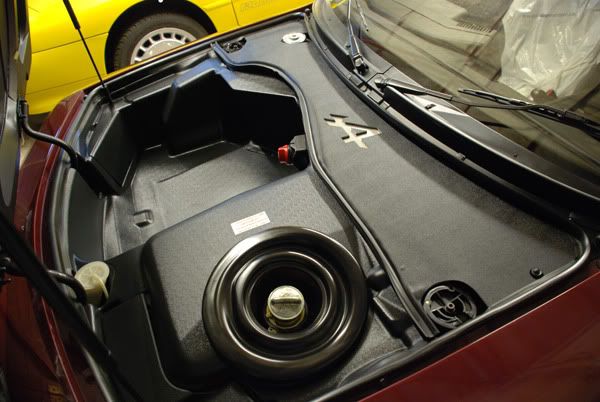
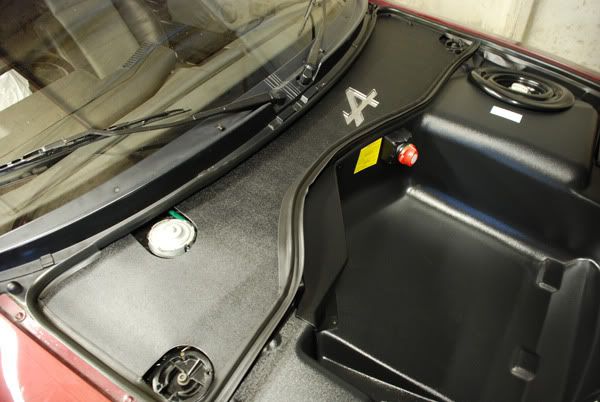
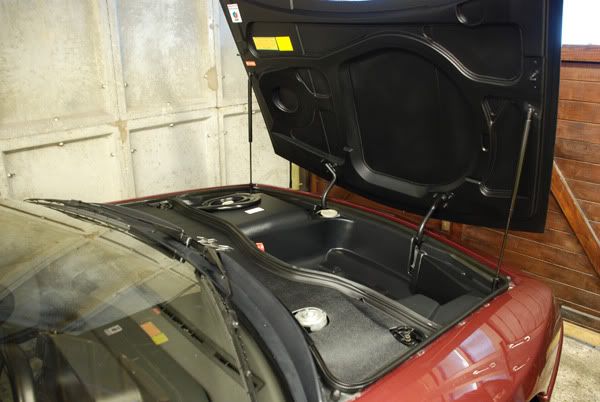
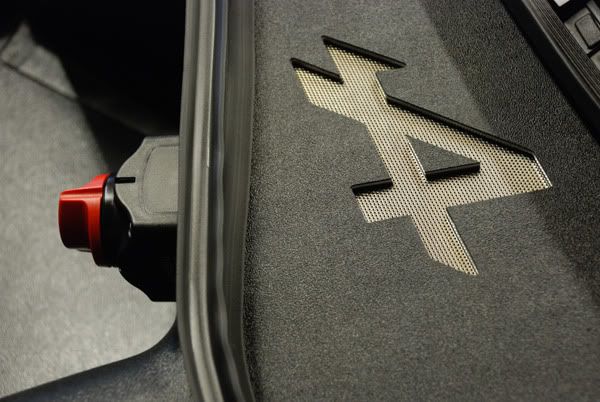
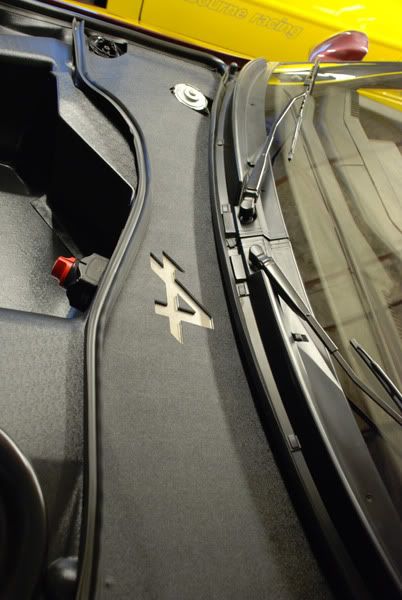

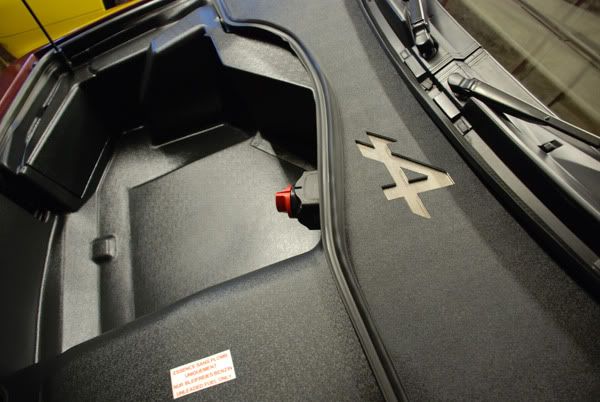
The aluminium panel has a 1mm thick rubber underlayer (glued) and is covered in high quality cabrio vinyl (from Woolies). The latter was the closest we could find in grain and texture to the other plastics in the boot - and it matches pretty well. Just for effect, we cut the 'flying A' by hand, polished the edges and mounted a fine stainless mesh under (see close-up). This also serves to act as a vent for the air intake which lies just underneath.
We think the end result looks OK, and a lot better than the original. All the effort went into the shaping of the panel - the materials really didn't cost very much. The switch is a marine quality isolator from Parkinsons - cost £18.
Hope it meets with approval. If anyone wants more detail on the construction process just ask.
Paul T








